There’s a wide range of options for children starting out riding and a balance bike represents the ideal entry point for many kids into the world of cycling.
Cycling is a life skill and teaching your child to ride a balance bike will give them a head-start at a young age before progressing to a pedal bike.
In this guide, we will take you through what exactly constitutes a balance bike, the pros and cons compared to a conventional pedal bike, and 11 of the best balance bikes to choose from.
We also have guides to the best kids' bikes and best cheap kids' bikes, as well as an introduction to cycling with children.
You may also want to check out our list of the best children's bike helmets and best child's bike seats.
You can read our buyer's guide to balance bikes at the end of this article.
11 of the best balance bikes to consider
Strider 12 Classic
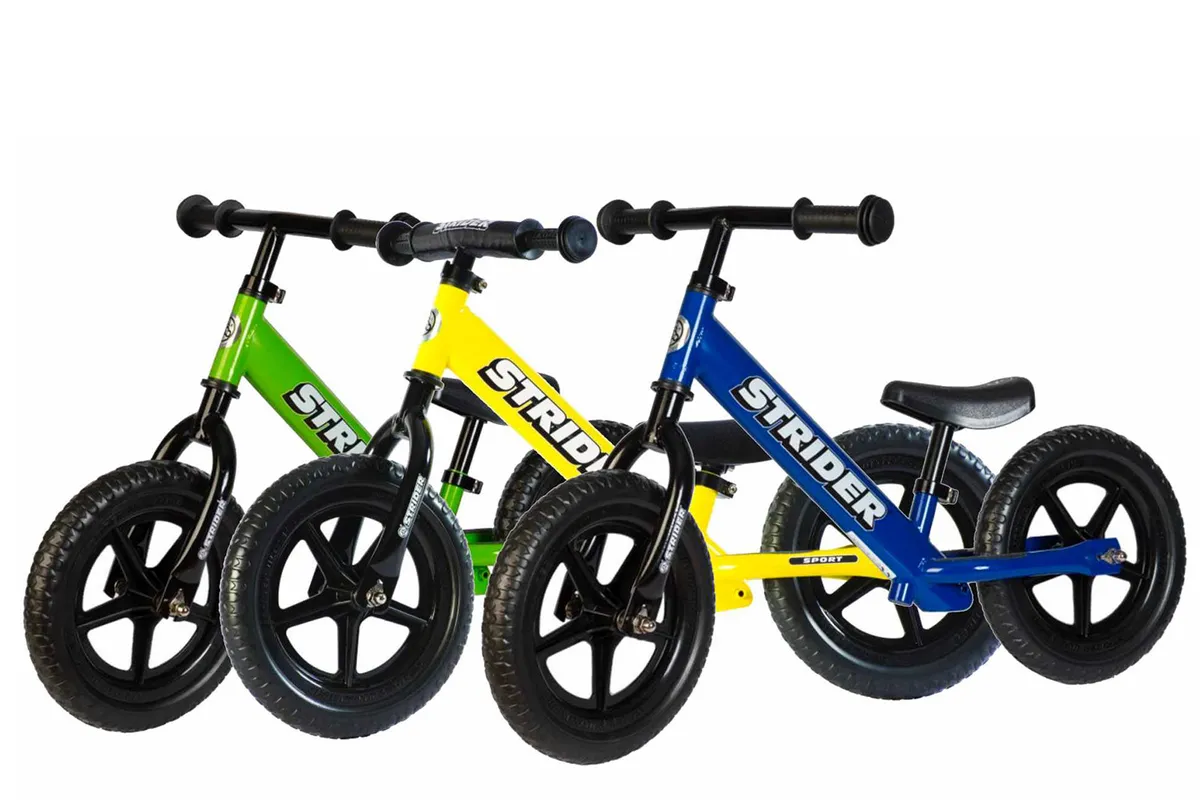
- £114.99/€139.99
The Strider 12 Classic comes with no-flat tyres and is made from steel. It is said to fit an inseam from 30 to 43cm and comes in at a claimed 2.9kg, as well as being available in four colours.
Frog Tadpole
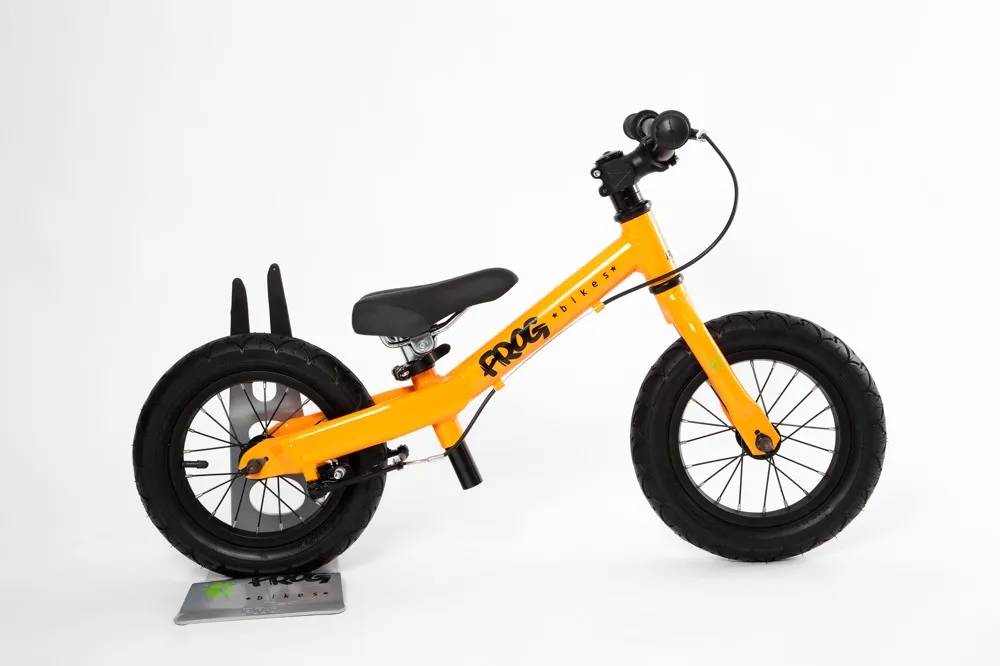
- £230/$290/€270
The Frog Tadpole is a 12-inch aluminium-framed balance bike and weighs a claimed 4.1kg. It is said to fit an average inside leg of 31cm. Frog specs a Tektro rear brake to help your tot stop, with internal cable routing. The Tadpole also features a quick-release seatpost clamp, for easier saddle-height adjustment.
Ridgeback Scoot
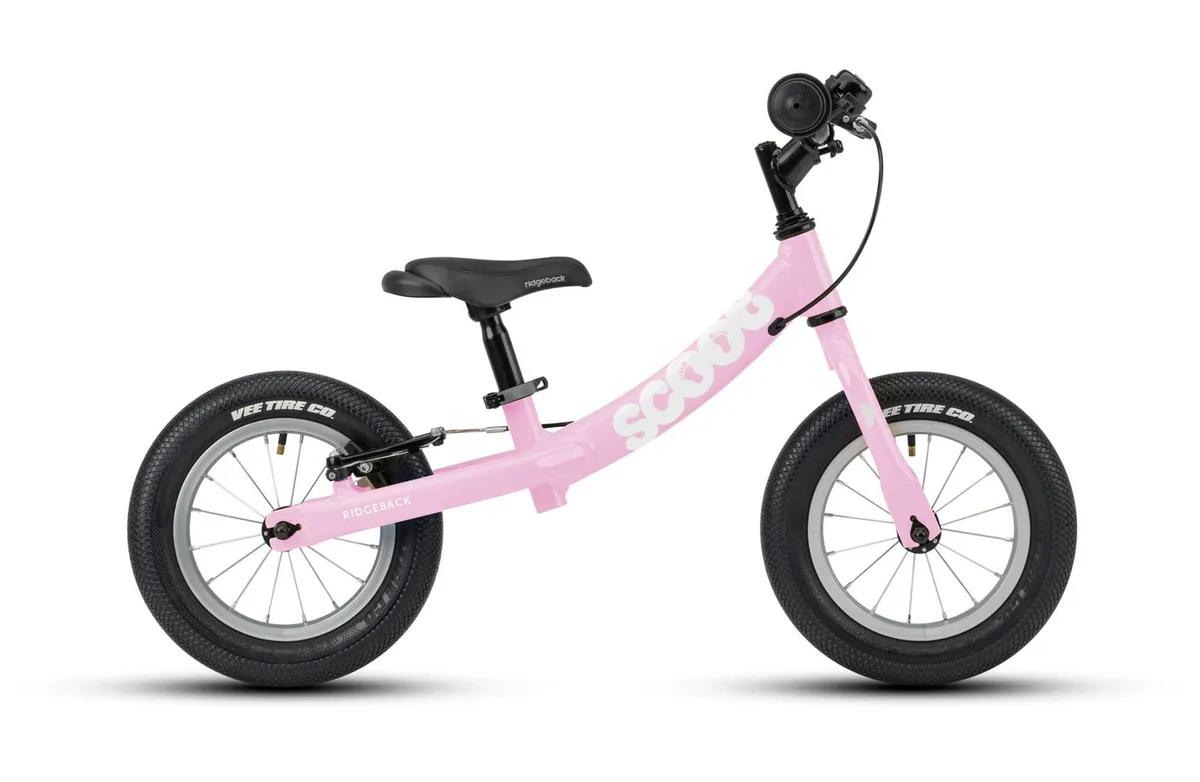
- £125/€135
Available in six different colours, Ridgeback's Scoot balance bike weighs in at a claimed 4.97kg and is said to suit a 90-100cm height range. It features 12-inch wheels and a rear brake, with the cable internally routed through the frame. The bike is equipped with Vee Speedster tyres in a 2in width.
Chicco Balance Bike

- £39.99/$69
The Chicco balance bike uses a metal frame and is said to feature puncture-proof tyres. You can adjust the handlebar and seat height, but it doesn’t use a quick-release, instead requiring a hex key. It's available in three colours – Red Bullet, Pink Arrow and green.
Puky LR1 L
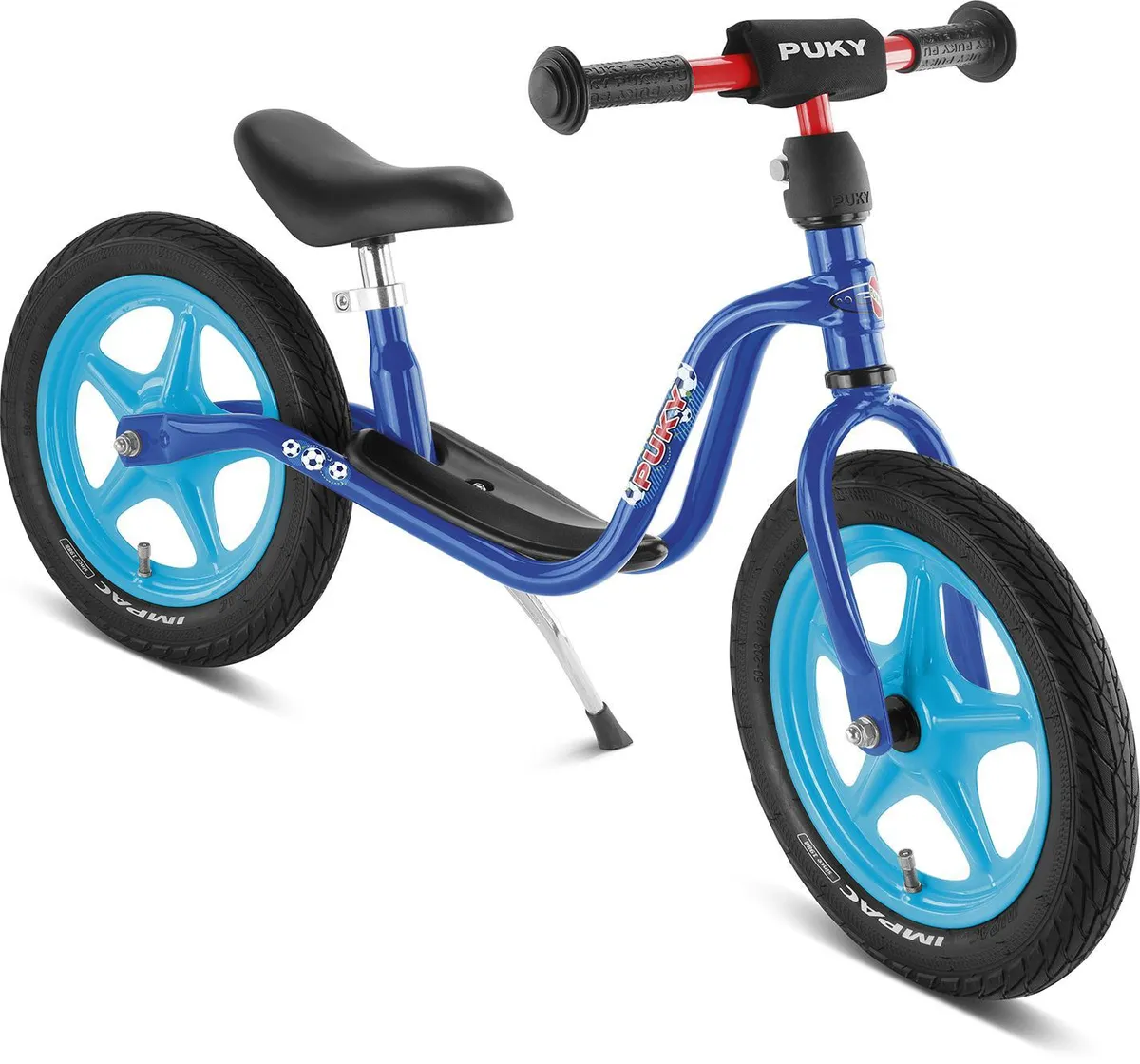
- £99.99/€104.99
German brand Puky has an extensive range of balance bikes, with options from 75-130cm heights. Its LR1 L is a low-step option, with a crash pad fitted on the handlebar clamp in case of any spills. It also runs on foam tyres for mechanical ease. It features height adjustment to the seatpost and saddle, and is said to fit a 30-43cm inseam.
Decathlon RunRide 500
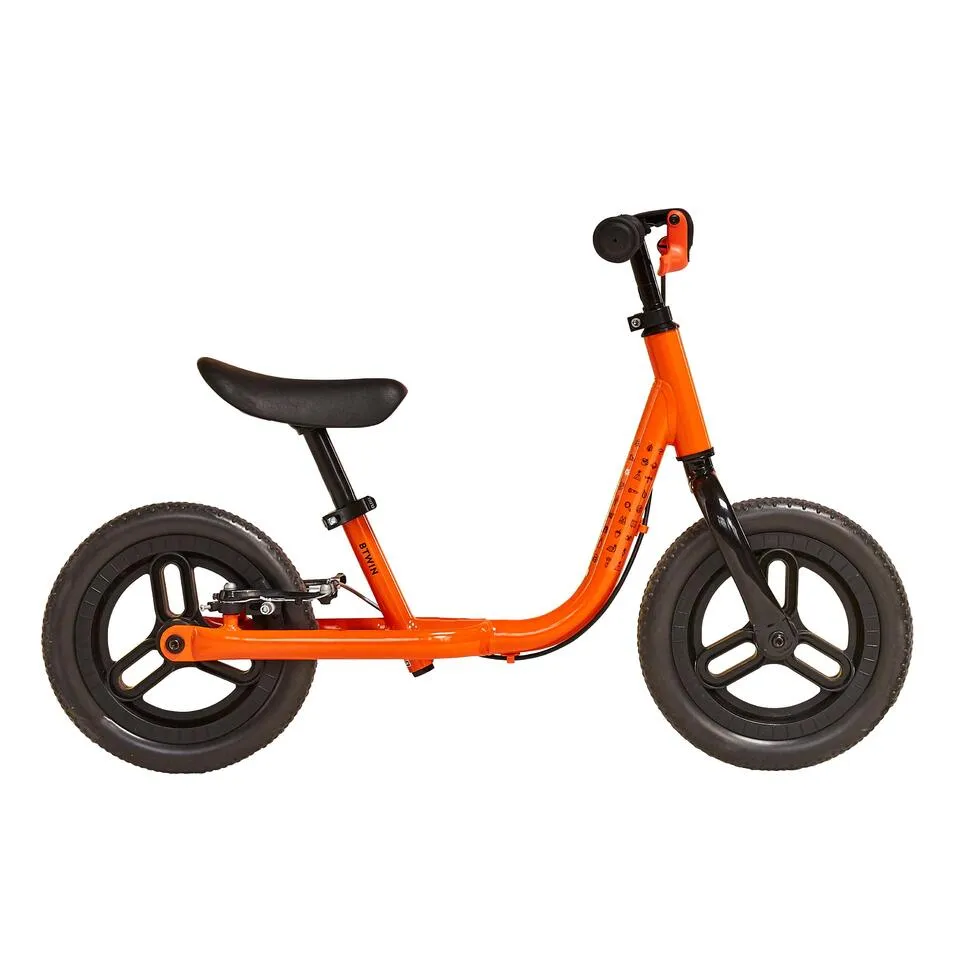
- £69.99/€71
The RunRide 500 balance bike is claimed to weigh 3.4 kg and features a low-step design, with a footrest at the base of the down tube and chainstays with 10-inch wheels. It features a rear brake, as well as a quick-release seat clamp for easier on-the-fly adjustment and is available in two colours.
Hoy Napier
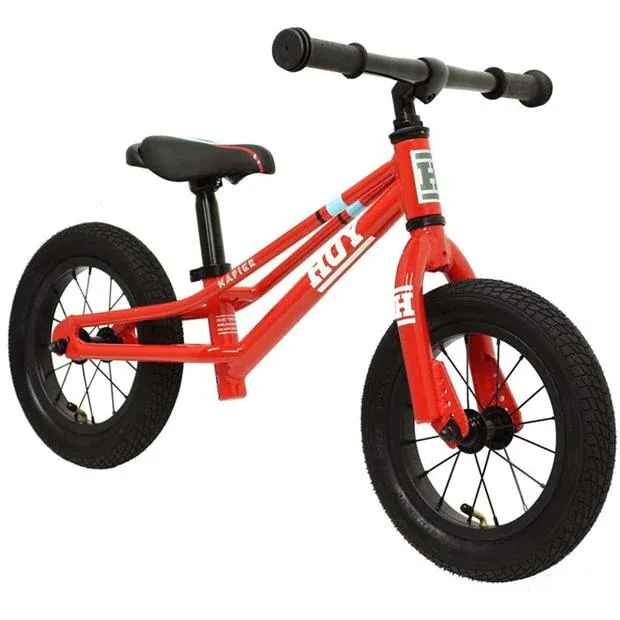
- £110
The Hoy Napier is styled after the BMX of Sir Chris Hoy’s early racing days and is named after the school playground where he learned to ride his first bike. It is said to fit a height range of 85-110cm. It features a lightweight aluminium frame, as well as alloy wheels, which will be more sturdy than the plastic wheels many cheaper balance bikes come equipped with.
Specialized Hotwalk Carbon
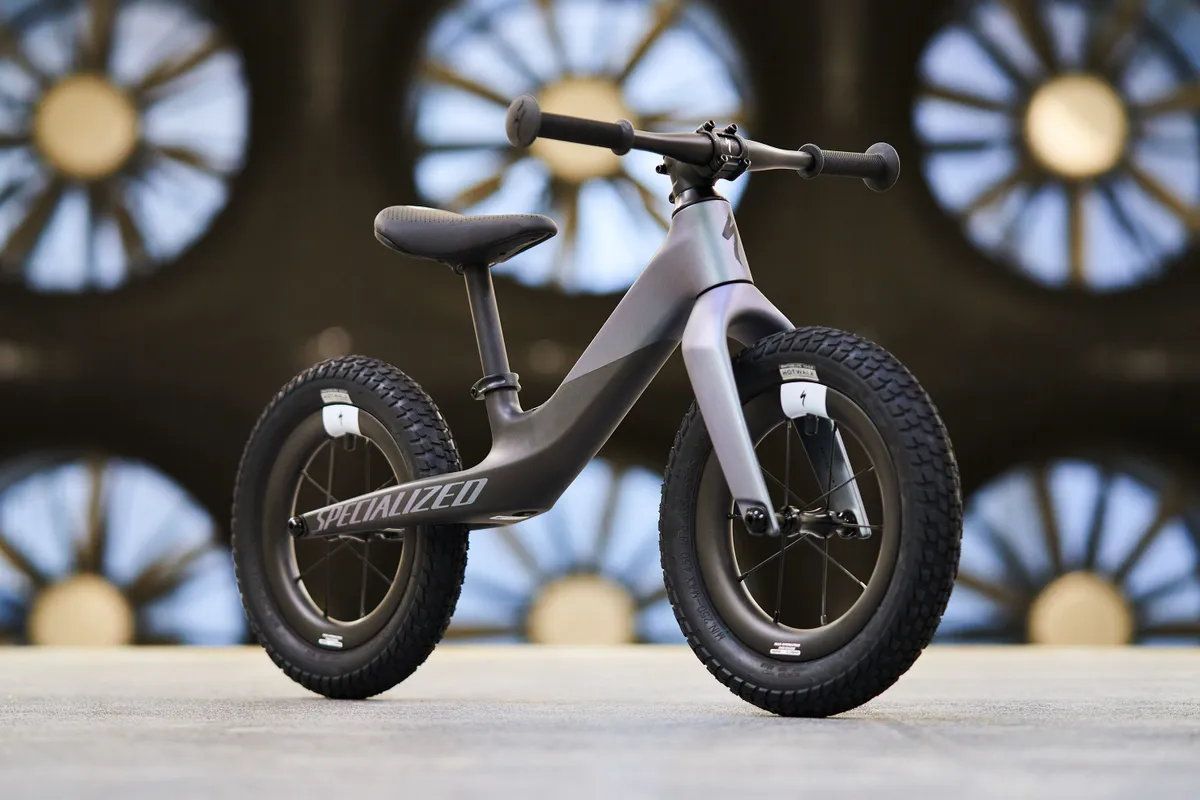
- £999/$999
The money-no-object-option, Specialized's Hotwalk is a carbon fibre-framed balance bike that costs a whopping £999/$999. It's claimed to weigh just 2.1kg, features a carbon handlebar and the 12-inch rims are also made from carbon fibre. If you’ve got a hole in your wallet to burn and you’d like the ultimate balance bike for your toddler, look no further.
Early Rider Charger 12
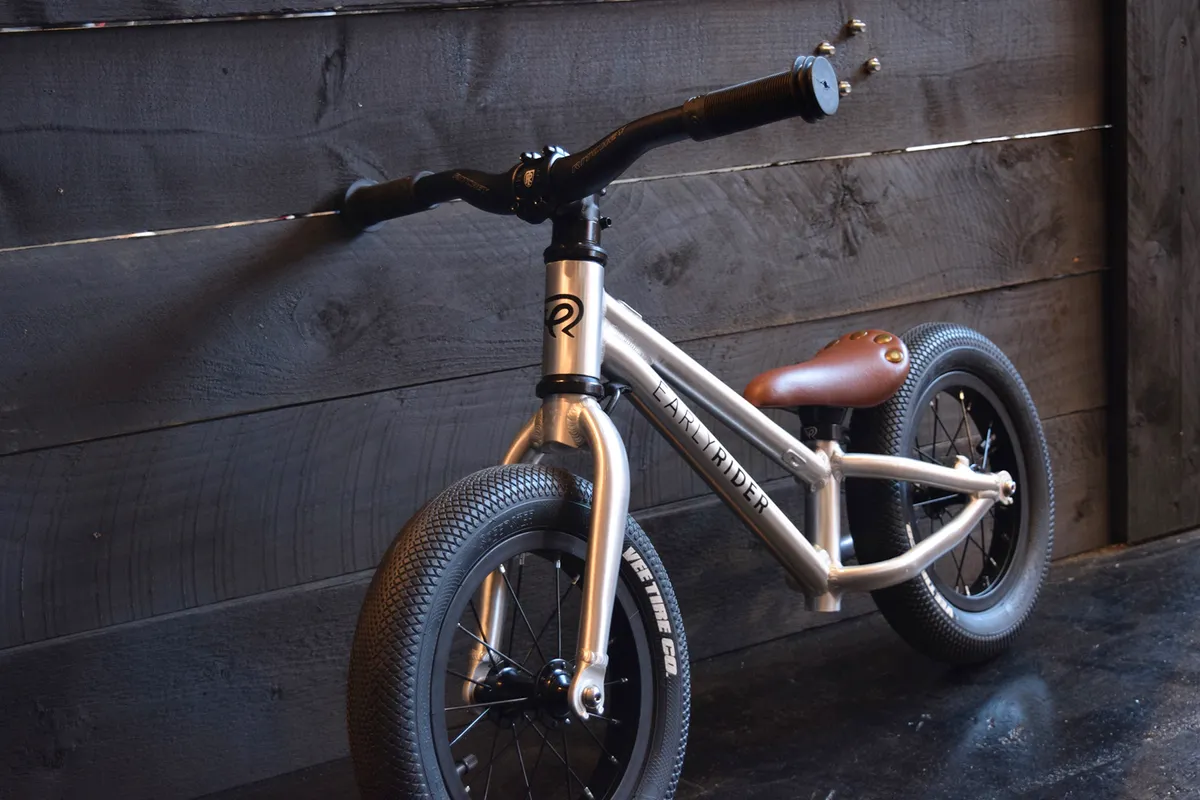
- £199
Early Rider’s Charger 12 is a premium balance bike option, with its classic aluminium construction and beautifully brushed finish with cold-forged dropouts. Its minimum seat height is 31cm and the bike features CNC’d aluminium hubs with sealed cartridge bearings. There is provisional internal cable routing for a rear brake, should you wish to install one in the future.
Carrera Coast

- £90
Carrera is Halford’s house-brand balance bike and is claimed to weigh 3.9kg. It features a rear brake with short-reach levers, a quick-release seat clamp and pneumatic tyres.
Islabikes Rothan 12

- £199.99
Islabikes claims the Rothan 12 balance bike weighs 3.1kg making it easier for little ones to manage. Unlike some balance bikes, the Rothan 12 features a rear brake with a lever designed for small hands.
The bike rolls on 12in pneumatic tyres and features a 'scooped' saddle which the brand says helps with scooting.
Buyer's guide to balance bikes
What is a balance bike?

A balance bike forgoes the pedals and crankset of a conventional bike, allowing kids to put their feet flat on the floor and scoot around.
It teaches them how to balance and control the bike without factoring pedalling into the equation.
Balance bikes sometimes forego brakes, especially when they are designed for indoor use or for very young children who may prefer to brake with their feet, but some options will come equipped with a brake (usually at the rear).
What age ranges are balance bikes for?

Age ranges aren’t particularly relevant for children’s bicycle sizing. Instead, a child’s height and inseam measurement are more critical to ensure a proper fit. Balance bikes are typically suited for children under 110cm, although this varies across models.
Don’t be tempted to buy a larger bike that is too big for your child because it will make it hard for them to manoeuvre and will likely be uncomfortable, ultimately hampering the learning experience.
Balance bikes typically use a 12-inch wheel size, but you can find options with 10-inch wheels for smaller children, and 14-inch wheels for taller children.
Is a balance bike better than a conventional children's bike?
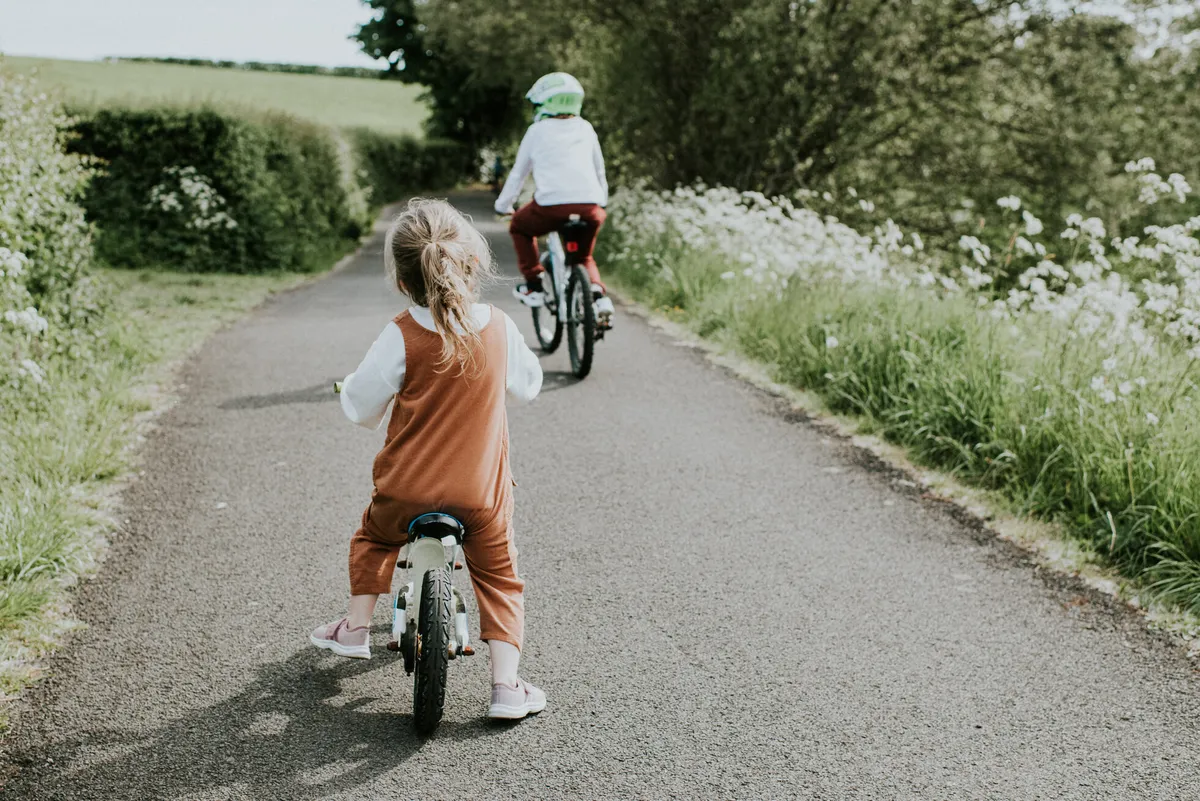
A balance bike typically represents an easier first step into teaching your child to cycle for toddlers. As their motor skills and coordination develop, the child can learn how to balance and steer on the bike, without the distraction of learning how to pedal.As they typically feature a smaller wheel size, it is also easier to get a tot onto a bike at a younger age.
With time, a balance bike will give a child the confidence to step up to a pedal-powered bike – and by now, they’ll understand how to balance, manoeuvre and control the bike, with pedalling the final piece in the puzzle.
While one alternative is to buy a conventional 12- or 14-inch kids' bike and remove the pedals, a balance bike will typically be lighter in weight, given there are fewer components, and some may have specific features such as a footrest.
Another alternative to a balance bike is to teach your child how to pedal straightaway. That way, there is one learning curve to cycling rather than two, but we’d recommend a balance bike as the entry point for young children.
Balance bike vs stabilisers
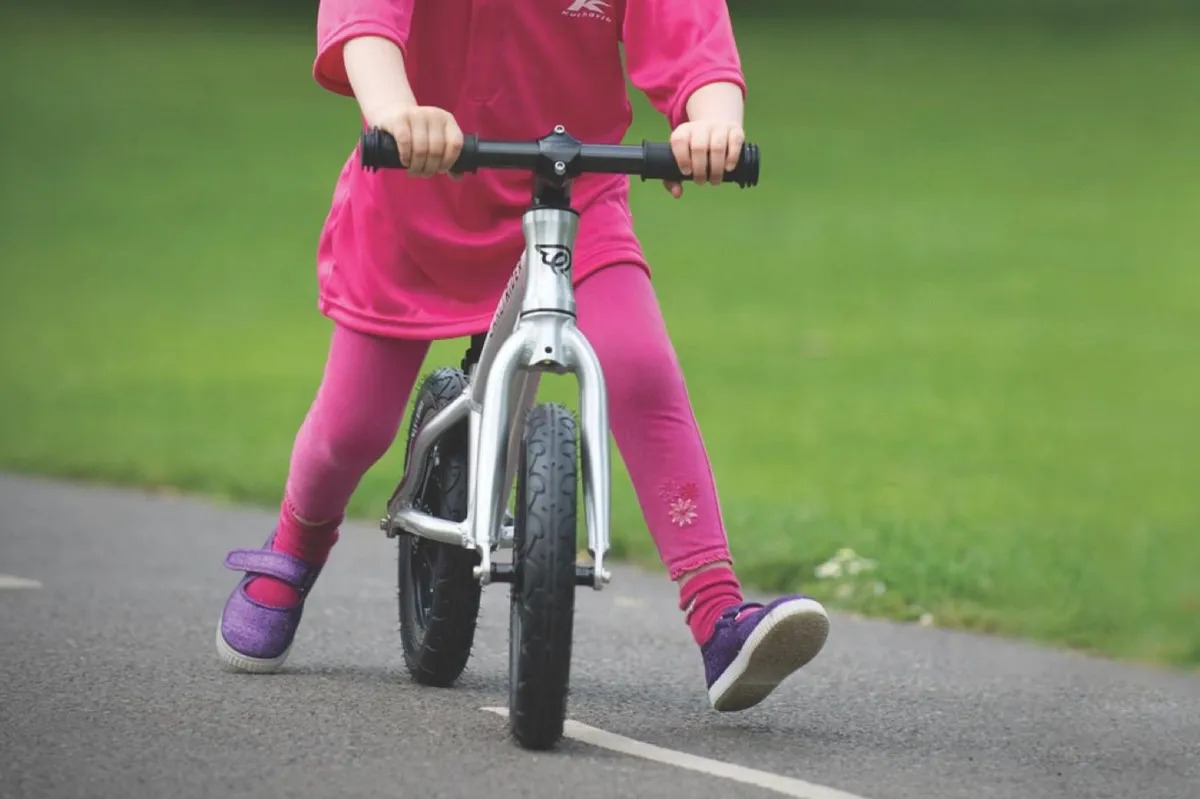
We’d recommend starting a young child on a balance bike, rather than using stabilisers (also known as ‘training wheels’).
As balance bikes teach young children to balance, it often makes for a simpler transition to a kids' bike without the need for stabilisers when they are older.
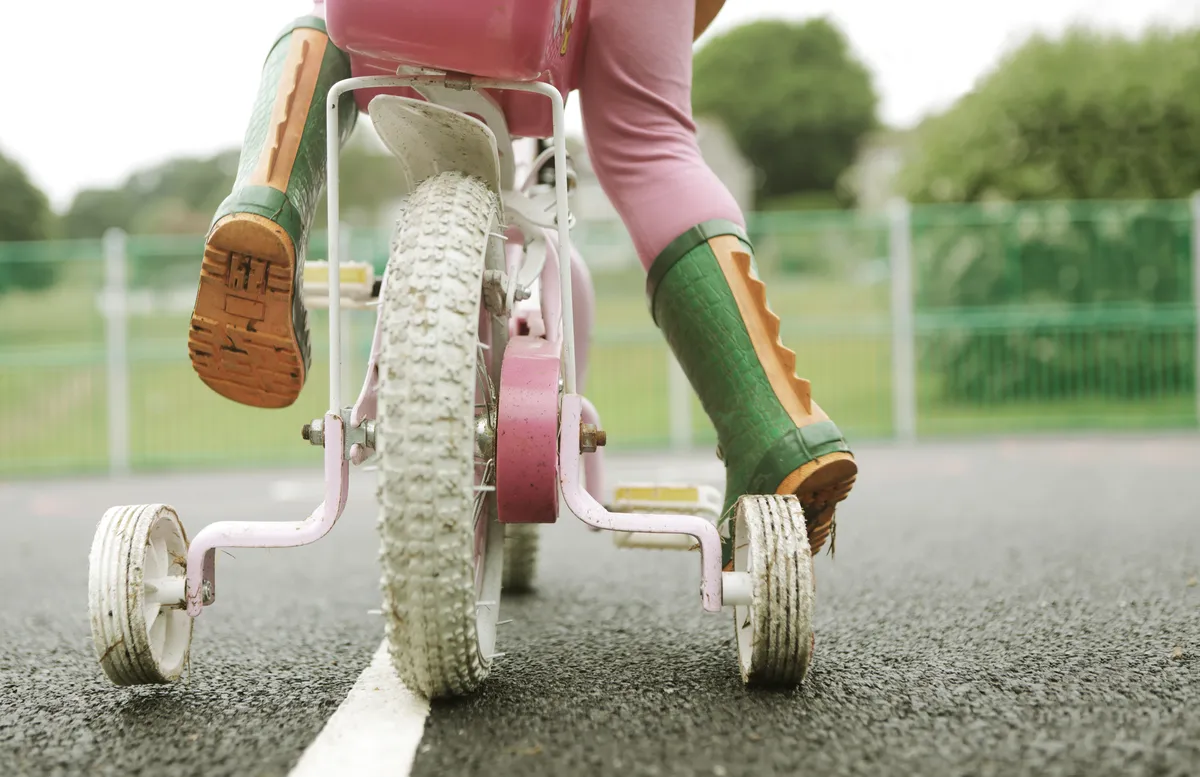
On a balance bike, children learn the art of cornering, how to steer and sometimes correct braking techniques (provided the bike has been specced with a rear brake).
Stabilisers effectively turn a kid’s bike into a tricycle, offering very different characteristics when cornering, which can complicate matters when stepping up to riding solely on two wheels, and having to learn how to balance on a bike from scratch.
What to look for in a balance bike
Frame material
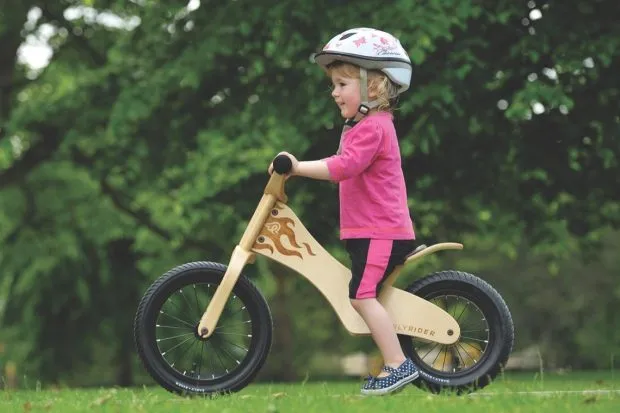
A balance bike frame will typically be made from metal, in many cases steel or, with lighter options, aluminium. There’s also a fairly broad spectrum of alloys that may be used.
The material plays a significant role in determining the weight of a balance bike. Some frames are made of wood, which is lightweight and suitable for riding indoors, but it may not stand up to long-term abuse outside.
Brakes
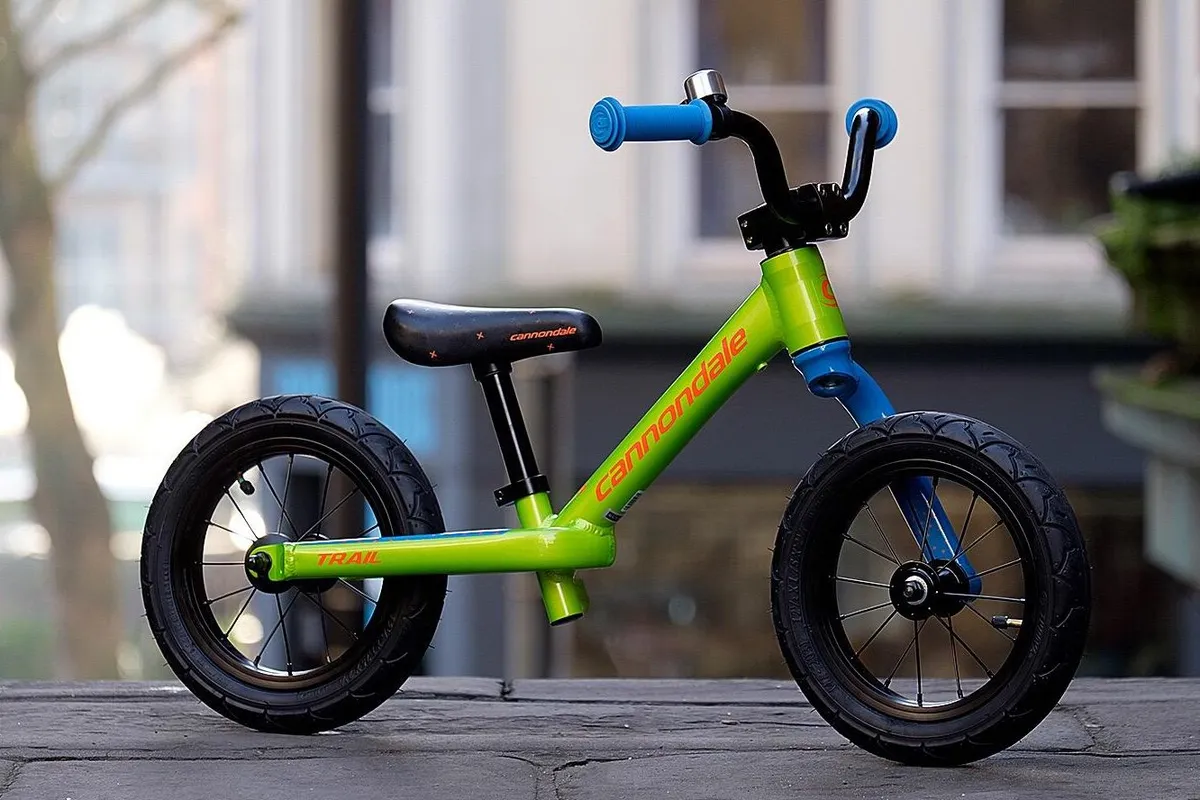
Some balance bikes feature a rear brake. This is particularly useful when riding outside, so the child can stop without using their feet. Balance bikes with a brake also represent a gateway in developing a child’s braking technique when it comes to stepping up to a pedal-powered bike.
Wheels
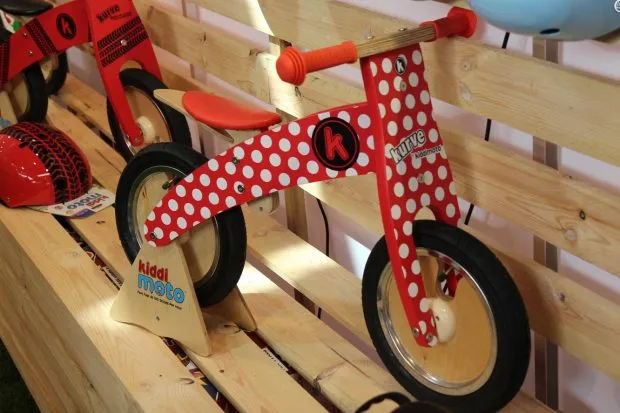
As you spend more, the quality of the wheels and tyres improves. Cheaper balance bikes will use plastic rims that can easily go out of true (roundness), whereas more premium options will use aluminium rims and sealed-bearing hubs, laced with spokes that can be adjusted should the wheel go out of true.
Tyres

Cheaper balance bikes use foam tyres, which won’t puncture but don’t offer a particularly exciting or grippy ride outside. More expensive balance bikes will feature dedicated tyres designed for tarmac or paths, with improved grip and durability.
Contact points
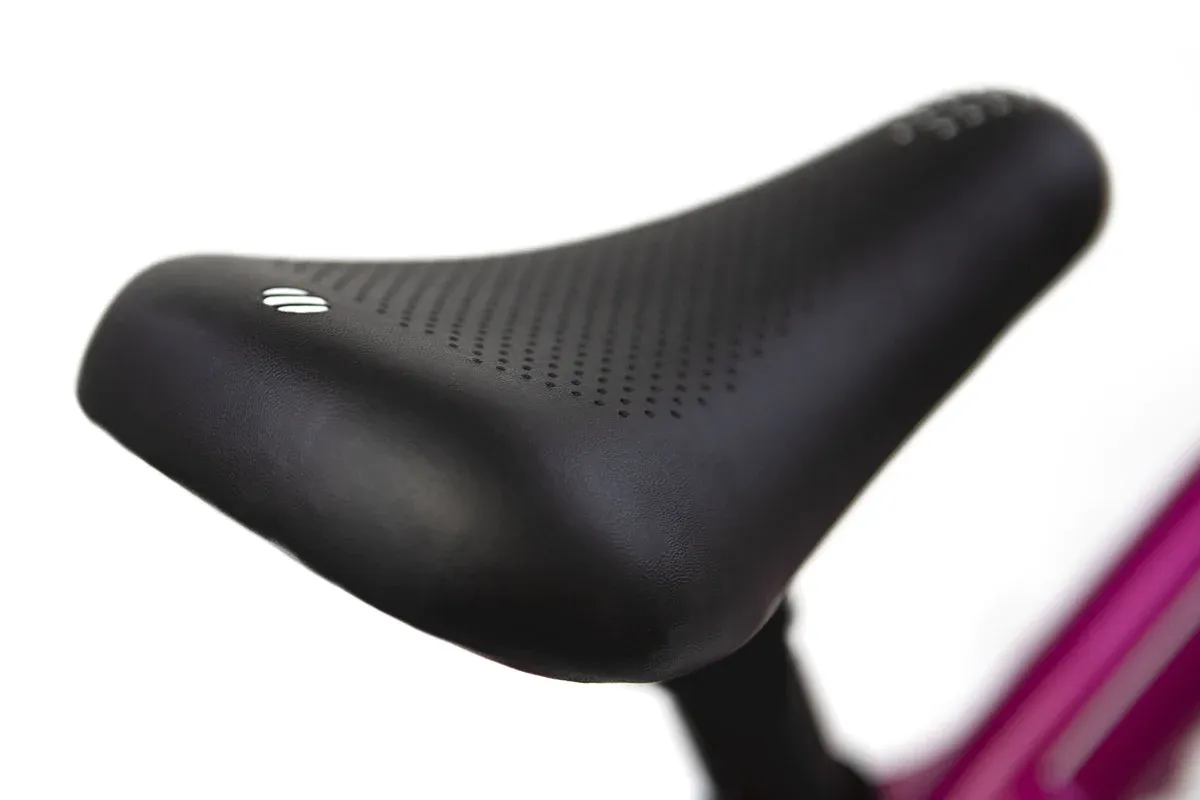
Good-quality balance bikes will feature a seatpost or a handlebar that allows height adjustment. Some may offer a quick-release clamp for easier adjustment. Either way, adjustable contact points will allow you to fine-tune the fit, and adjust the bike as a child grows.
